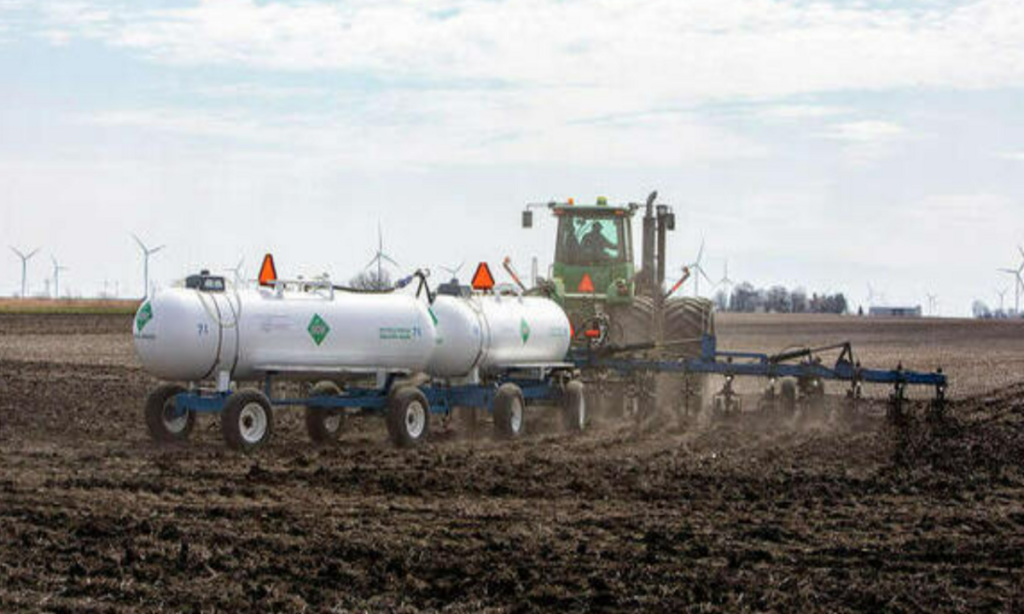As farmers enter another year of tight budgets, it looks like fertilizer prices will continue to put pressure on their financial plans. With costs expected to stay high, farmers are facing a challenging 2025, especially when it comes to buying essential supplies like nitrogen and phosphate fertilizers.
Fertilizer Prices Still High
Josh Linville, the vice president of fertilizer at StoneX, says that nitrogen and phosphate prices are staying firm because of tight supply and high demand. “The problem is, we’re starting 2025 with fertilizer prices looking pretty high,” he explains. “We’re worried about what that means for prices when spring comes around.”
One reason for these high prices is the drop in fertilizer exports from China and production in Europe. This decrease means that the global fertilizer market could see prices rise even more in the coming months.
Linville also adds that to get the fertilizers needed, importers will have to work hard, and this might push prices even higher. “We’ll need to raise prices a lot to get the supplies we desperately need,” he says.

Urea and Ammonia Prices Are Up
Fertilizers like urea ammonium nitrate and anhydrous ammonia, which are commonly used in places like Illinois, usually follow the price trends of urea. Because of the global shortage, these fertilizers are expected to stay expensive.
While urea might be hard to find, another fertilizer called potash is still more available, which is why its prices are a bit lower. However, this could change because of possible new tariffs under President Trump.
Tariffs Could Hurt Farmers
Linville warns that if President Trump reintroduces tariffs on Canadian goods, it could impact the price of potash. Canada is the world’s biggest producer of potash, and these tariffs could raise costs for farmers. “If these tariffs get put in place, it will affect the farm side,” he says. “Farmers might have to pay more for potash.”
Trump has used tariffs before to control trade, but according to Linville, these actions might end up hurting local farmers more than helping them. “Farmers in the country that puts tariffs on goods usually end up paying the price,” Linville explains.
Can Things Improve?
Despite the uncertainty with tariffs, Linville remains hopeful. He believes that if the world sees less conflict and more stability, markets might calm down. This could bring prices back to more manageable levels, which would benefit farmers in the long run.
“During Trump’s first term, we saw less global conflict, and if that happens again, trade could return to normal, and prices might settle down,” he adds.
What Can Farmers Do?
Farmers need to keep their fertilizer suppliers updated about their plans in 2025. It’s important to communicate early so suppliers can adjust and make sure the right fertilizers are available when needed.
“I know it’s tough, but we can’t just ignore the situation,” Linville says. “We need more information, not less, to plan better.”
Fertilizer Prices in 2025
In Illinois, the cost of fertilizers is already higher than usual. As of this year, prices for anhydrous ammonia range from $650 to $795 per ton. Prices for diammonium phosphate (DAP) are between $682 and $780 per ton. Potash is cheaper at $400 to $520 per ton, while urea prices range from $510 to $554 per ton.
Even though there was a delay in applying fertilizers last fall, things seem to be back on track. Linville says that farmers managed to catch up by the end of November, and things are looking normal for spring applications.
Conclusion
The fertilizer market is a key issue for farmers in 2025. With prices expected to stay high due to tight supply and potential new tariffs, farmers need to stay informed and plan ahead. While challenges remain, there is still hope that things will improve if the world sees more stability and trade flows return to normal.
Disclaimer—Our team has checked this article to ensure its accuracy and eliminate any misinformation. We are committed to providing clear and reliable information for our readers.




